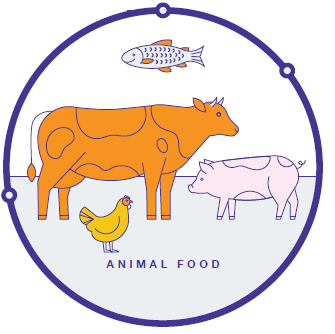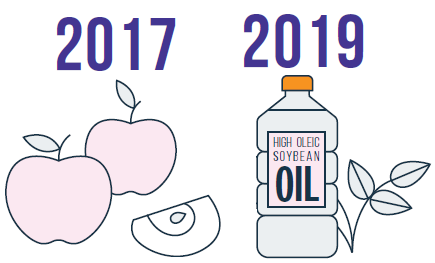
750 mill GMO mosquitoes will be released in florida. They changed their DNA so that they can't reproduce.
What could possibly go wrong? Maybe, the people who get stung by them can't reproduce neither.
Is Bill Gates involved in this experiment?
If I remember correctly, they tried something like this in Brazil, and it didn't work out too well
https://www.cnn.com/2020/08/19/health/gmo-mosquitoes-approved-florida-scn-wellness/index.html
https://www.compassion.com.au/blog/the-5-most-dangerous-animals-for-a-child-in-poverty
438,000 deaths per year

It’s been called the most hated creature on the planet. The mosquito is responsible for more deaths than any other animal combined. In Africa, mosquitos are often deadly because certain species transmit malaria. In 2015, there were 214 million cases of the disease globally, with 438,000 of these resulting in death. Of these deaths, 90 per cent occur in Sub-Saharan Africa and sadly, 78 per cent of these deaths are children under the age of five.
In 2015 alone, 303,000 African children died before their fifth birthday due to malaria.
There are nearly 3,500 types of mosquitoes and only 200 of those bite humans, even fewer of those carry diseases. It’s the female Anopheles mosquitoes who are responsible for carrying malaria.
Note: While humans are responsible for more deaths worldwide than animals, for the purposes of this article we focused on creatures from the animal kingdom.
metmike: It's the Aedes aegypti mosquitoes that have been turned into GMO experiments in this article above. These are the most deadly for some of the non malaria diseases.
https://en.wikipedia.org/wiki/Aedes_aegypti
Aedes aegypti, the yellow fever mosquito, is a mosquito that can spread dengue fever, chikungunya, Zika fever, Mayaro and yellow fever viruses, and other disease agents. The mosquito can be recognized by white markings on its legs and a marking in the form of a lyre on the upper surface of its thorax. This mosquito originated in Africa,[2] but is now found in tropical, subtropical and temperate regions[3] throughout the world.[4]
| Synonyms[1] | |
|---|---|
| Binomial name | |
| Scientific classification
| |
| Yellow fever mosquito | |
 | |
| Adult | |
 | |
| Larva | |
| Kingdom: | Animalia |
| Phylum: | Arthropoda |
| Class: | Insecta |
| Order: | Diptera |
| Family: | Culicidae |
| Genus: | Aedes |
| Subgenus: | Stegomyia |
| Species: | A. aegypti |
| Aedes aegypti (Linnaeus in Hasselquist, 1762) [1] | |
 | |
| Global Aedes aegypti predicted distribution in 2015, (blue=absent, red=present) | |
Aedes aegypti is a vector for transmitting several tropical fevers. Only the female bites for blood, which she needs to mature her eggs. To find a host, these mosquitoes are attracted to chemical compounds emitted by mammals, including ammonia, carbon dioxide, lactic acid, and octenol. Scientists at The United States Department of Agriculture (USDA) Agricultural Research Service have studied the specific chemical structure of octenol to better understand why this chemical attracts the mosquito to its host.[5] They found the mosquito has a preference for "right-handed" (dextrorotatory) octenol molecules.
The yellow fever mosquito can also contribute to the spread of reticular cell sarcoma among Syrian hamsters.[6]
The Centers for Disease Control and Prevention traveler's page on preventing dengue fever suggests using mosquito repellents that contain DEET (N, N-diethylmetatoluamide, 20% to 30%). It also suggests:
Biotech company released millions of genetically modified mosquitoes into Jacobina in Brazil.
https://www.livescience.com/genetically-modified-mosquitoes-create-hybrids.html
"They found that some of the genes from the genetically modified mosquitoes had transferred to the native population. In other words, some of the offspring had survived and were strong enough to reproduce. This new population is a hybrid of Brazilian mosquitoes and the genetically modified mosquitoes that were created from strains in Cuba and Mexico, according to the study, which was published Sept. 10 in the journal Scientific Reports.
"The claim was that genes from the release strain would not get into the general population because offspring would die," senior author Jeffrey Powell, a professor of ecology and evolutionary biology at Yale University, said in a statement. "That obviously was not what happened."
However, there is no known health risk to humans that might come from these hybrids, he said. "But it is the unanticipated outcome that is concerning," Powell added.
In fact, the genes that were passed on weren't the tweaked genes that were designed to kill and tag the mosquitoes but rather genes from the strains in Cuba and Mexico, according to Science magazine. The researchers also noted that this mixing of genes might have led to a "more robust population," perhaps one that would be better able to resist insecticides or transmit diseases, Science magazine reported.
That suggestion has prompted a backlash from the company. "We're not surprised by the results, but what we are surprised by are the speculations that the authors have made," Nathan Rose, head of scientific and regulatory affairs at Oxitec, told Science magazine.
The company has requested that the journal review these "misleading and speculative statements"; indeed, the paper now includes an editor's note saying the journal is considering the criticisms."
metmike: There are alot of people that fear and are against GMO crops(Genetically Modified Organisms). The nickname "Frankenfood" was used to label them around 2 decades ago. Fears about humans tampering with nature in ways that are unnatural.
Producers here are actually the ones that use them more than anybody else on the planet. I'll bet we can't find one of them that is against it.
Why would they?
GMO crops have led to tremendous benefits to the crops and food they produce. The science is pretty compelling.
https://allianceforscience.cornell.edu/blog/2018/06/frankenstein-unfairly-sways-gmo-debate/
https://www.fda.gov/food/agricultural-biotechnology/gmo-crops-animal-food-and-beyond
More than 95% of animals used for meat and dairy in the United States eat GMO crops. Independent studies show that there is no difference in how GMO and non-GMO foods affect the health and safety of animals. The DNA in the GMO food does not transfer to the animal that eats it. This means that animals that eat GMO food do not turn into GMOs. If it did, an animal would have the DNA of any food it ate, GMO or not. In other words, cows do not become the grass they eat and chickens don’t become the corn they eat.

Similarly, the DNA from GMO animal food does not make it into the meat, eggs, or milk from the animal. Research shows that foods like eggs, dairy products, and meat that come from animals that eat GMO food are equal in nutritional value, safety, and quality to foods made from animals that eat only non-GMO food.
https://www.fda.gov/food/agricultural-biotechnology/how-gmo-crops-impact-our-world
Most of the GMO crops grown today were developed to help farmers prevent crop loss. The three most common traits found in GMO crops are:
For GMO crops that are resistant to insect damage, farmers can apply fewer spray pesticides to protect the crops. GMO crops that are tolerant to herbicides help farmers control weeds without damaging the crops. When farmers use these herbicide-tolerant crops they do not need to till the soil, which they normally do to get rid of weeds. This no-till planting helps to maintain soil health and lower fuel and labor use. Taken together, studies have shown positive economic and environmental impacts.
Circa 8000 BCE Humans use traditional modification methods like selective breeding and cross-breeding to breed plants and animals with more desirable traits.
1866 Gregor Mendel, an Austrian monk, breeds two different types of peas and identifies the basic process of genetics.
1922 The first hybrid corn is produced and sold commercially.
1940 Plant breeders learn to use radiation or chemicals to randomly change an organism’s DNA.
1953 Building on the discoveries of chemist Rosalind Franklin, scientists James Watson and Francis Crick identify the structure of DNA.
1973 Biochemists Herbert Boyer and Stanley Cohen develop genetic engineering by inserting DNA from one bacteria into another.
1982 FDA approves the first consumer GMO product developed through genetic engineering: human insulin to treat diabetes.
1986 The federal government establishes the Coordinated Framework for the Regulation of Biotechnology. This policy describes how the U.S. Food and Drug Administration (FDA), U.S. Environmental Protection Agency (EPA), and U.S. Department of Agriculture (USDA) work together to regulate the safety of GMOs.
1992 FDA policy states that foods from GMO plants must meet the same requirements, including the same safety standards, as foods derived from traditionally bred plants.
1994 The first GMO produce created through genetic engineering—a GMO tomato—becomes available for sale after studies evaluated by federal agencies proved it to be as safe as traditionally bred tomatoes.
1990s The first wave of GMO produce created through genetic engineering becomes available to consumers: summer squash, soybeans, cotton, corn, papayas, tomatoes, potatoes, and canola. Not all are still available for sale.
2003 The World Health Organization (WHO) and the Food and Agriculture Organization (FAO) of the United Nations develop international guidelines and standards to determine the safety of GMO foods.
2005 GMO alfalfa and sugar beets are available for sale in the United States.
2015 FDA approves an application for the first genetic modification in an animal for use as food, a genetically engineered salmon.

2016 Congress passes a law requiring labeling for some foods produced through genetic engineering and uses the term “bioengineered,” which will start to appear on some foods.
2017 GMO apples are available for sale in the U.S.
2019 FDA completes consultation on first food from a genome edited plant.
Cons
Now that you understand GMO's a bit more............
I am strongly in favor of these GMO mosquitoes!
Just the fact that it's much better than spraying pesticides, which harms/kills good insects, like bees makes it worth the tiny risk of something bad happening.
I would be interested in hearing bears take......as he is a bee keeper.

https://www.honeybeesuite.com/mosquito-spraying-decimates-honey-bees/

Thousands of dead bees littered the ground after aerial mosquito spraying in the Florida Keys.